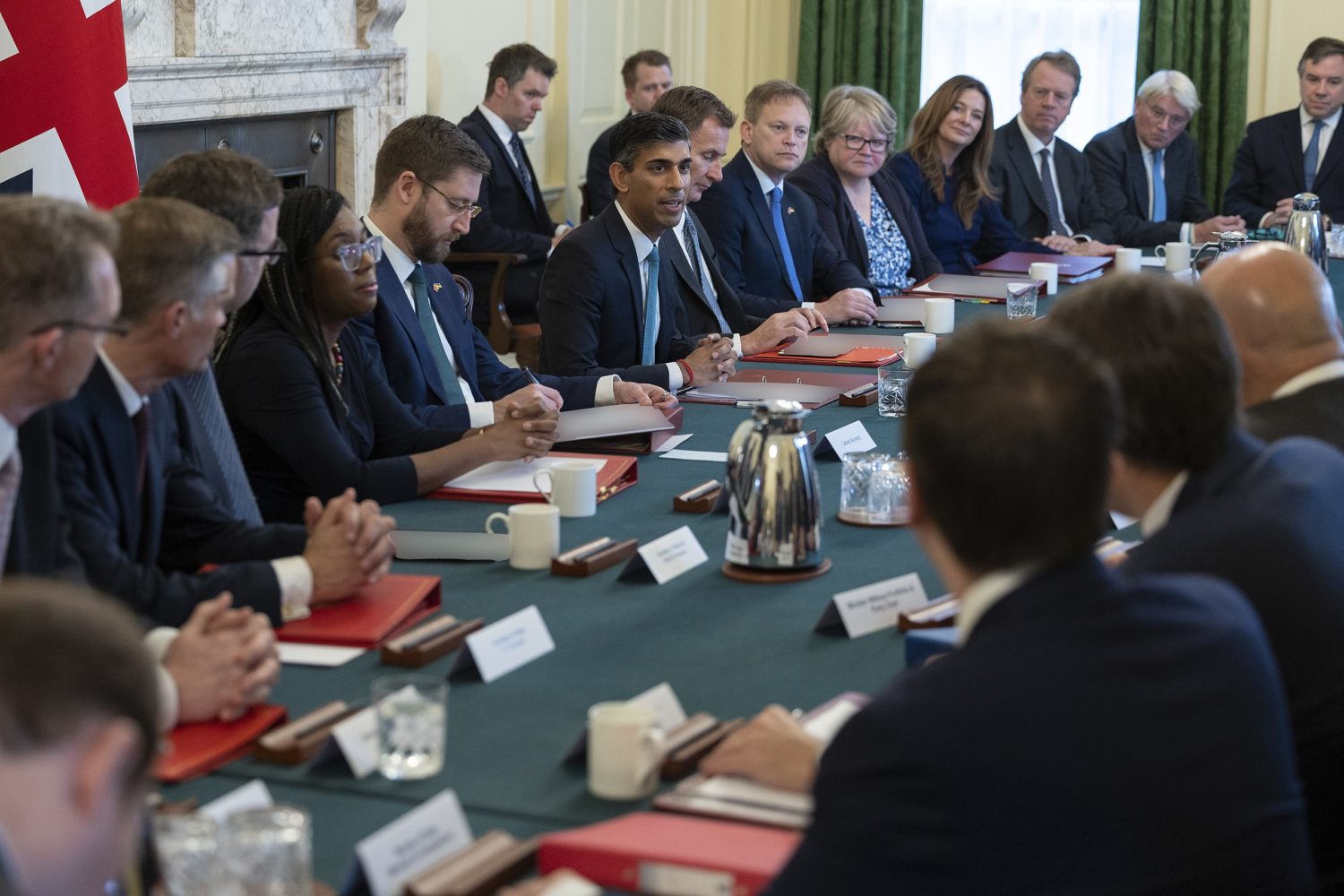The B-Team
A divided Conservative party has produced another second-rate frontbench. The prime minister may suffer as a result, writes Martin Farr
In its composition, the Sunak cabinet is an improvement over its two predecessors, though no bar ought to be set so low – none since Bonar Law’s in 1922 have been so conspicuously ‘second eleven’. Yet it is not the cabinet he would have wished for. Even more so than usual, the exigencies of crisis and the squaring of factions predominated.
Not the least of the failings of government in the age of Brexit have been through its backwash. Boris Johnson’s administration disintegrated owing to the character of the prime minister, but from the outset was hidebound by his November 2021 purge of Remain MPs. Liz Truss, too, overprivileged fidelity to a harder Brexit, although promptly reversed two repudiations (Jeremy Hunt and Grant Shapps). Many in recent cabinets would have risen no higher than junior minister under Macmillan or indeed Thatcher, who never had a hard-right Home Secretary until the very end. They, too, purged their colleagues, in 1962 and 1981 respectively, but there remained room for dissentient talent.
The marginalisation of Brexit sceptics and the compensatory antics of ex-Remainers (most obviously Theresa May and Truss) is one of Brexit’s legacies. So too is Johnson’s outsized electoral coalition, which, facilitated by the WhatsApp organisational revolution, produced an unusually factional parliamentary party (selected initialisms: ERG, NRG, CSG, NZSG, CRG) and yet an unusually narrowly based ministry. The methods by which the 2016 and 2019 victories were achieved were extended into office, the personification of which being Johnson himself. The defenestration of his ethics adviser was only his most egregious act.
Sunak’s misjudgements were immediate, including the appointment of two obvious accidents-waiting-to-happen. Suella Braverman’s restoration as Home Secretary a week after her sacking was worse than a scandal: it was a mistake, an act of political perversity that can only be attributed to factionalism. Appointing a home secretary who broke the ministerial code is very much of this moment, but Braverman is priced as one of the costs of unity, more than Priti Patel ever was.
The intense, temporarily abated, scrutiny of Braverman belies the cabinet’s principal imbalance: just a quarter of its members are female. As a quarter of Conservative MPs are female, a certain logic might think this proportionate, but it’s a perplexing oversight given that Sunak’s closest aides are almost all women. Penny Mordaunt was, in today’s argot, disrespected; Wendy Morton went vocal into that good night, in the process foreclosing someone’s bright idea of seeking to pre-empt Sir Gavin Williamson’s backbench scheming.
The offices of Chancellor and Foreign Secretary are in the hands of the non-factional. Jeremy Hunt remains the most opportune minister, the panicked appointment of whom meant he was unsackable. Sunak loyalists – Oliver Dowden, Mel Stride – warranted inclusion on merit. An effective Conservative cabinet has Michael Gove in it. Andrew Mitchell’s presence strengthens, albeit by highlighting the weakening of post-Brexit development policy. That Steve Barclay offers continuity having been in post since July underlines the churn: Gillian Keegan is the fifth Education Secretary in a year, though a smart appointment. Only fear of Johnny (and Felicity) Mercer can explain a cabinet seat for veterans’ affairs; the cabinet was already bloated, with a total of 32 now attending.
There are those fortunate to be in, and several unfortunate to be out, more by association with the previous regime (Chloe Smith, Kit Malthouse) than by affiliation or aptitude; some red wall mortar went with Sir Jake Berry, with the Northern Research Group (NRG) looking an increasingly ephemeral faction. The Cabinet does at least continue the new norm of notable ethnic diversity.
This is a better administration than the country has been accustomed to recently, and factional disarray is as nothing to that had Johnson returned, as even he conceded. But as yet another government with a short lifespan, Sunak’s intensifies the whirligig that politics has become. And, for all its efforts to present itself as neophyte, it’s an old government; worse, an accretion of old governments, uniquely with three premiers on the backbenches, their own semi-extinct networks of patronage arrayed around them. Alongside the many ex-ministers and perpetual backbenchers sits a new fellowship of the frustrated: those with ministerial careers of weeks, or even days. And at its an apex, the youngest premier for 200 years, who has already demonstrated the perils of an inexperience surmountable only with a mandate he does not have.
Image credit: UK Prime Minister, OGL via Wikimedia Commons
Image credit: Number 10, CC BY 2.0 via Wikimedia Commons

